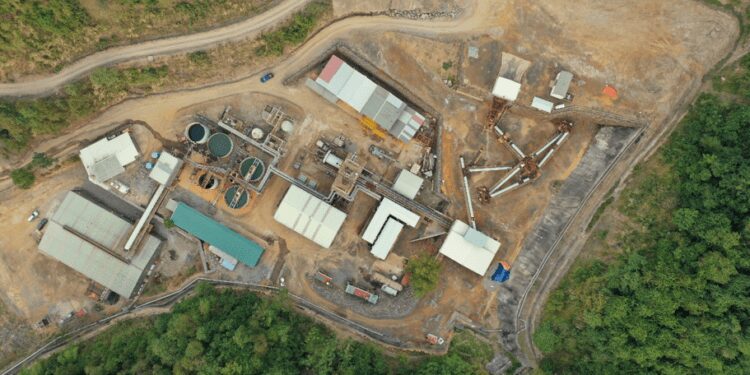Maiden Ban Chang Programme A Big Hit
Blackstone Minerals Limited (ASX: BSX) has intersected massive sulfide in four maiden drill holes at Ban Chang, part of its Ta Khoa Nickel-Cu-PGE project in Vietnam.
Managing Director, Scott Williamson, said the drill holes were drilled more than 1.2km apart and along strike within a 1.2km-long massive sulphide target zone defined by high priority EM plates.
“Our latest assays confirm further high-grade mineralisation at Ban Chang,” Mr Williamson said.
“We continue to demonstrate strong potential for a bulk underground mining scenario at Ban Chang which could be significantly larger scale than the previously mined Ban Phuc massive sulfide underground mine.
“At Ban Phuc, the previous owners successfully mined a 1.3m wide MSV at much lower nickel prices than today. We are seeing broader widths and significant by-products which could lend to potentially better economics than when this mine previously operated.
“We have now drilled significant massive sulfide nickel mineralisation over 1.2km of strike at Ban Chang and our in-house geophysics crew continues to test for further massive sulfide mineralisation at the new target, Ta Cuong.
“Ban Chang and Ta Cuong are the first of our 25 MSV targets to be tested throughout the Ta Khoa Ni-Cu- PGE district, leaving plenty of upside for adding high-grade feed to what looks like a bulk open pit mining scenario at Ban Phuc and the KCZ.”
Mr Williamson said Blackstone’s Scoping Study on downstream processing to produce nickel sulphatefor the lithium- ion battery industry and Ban Phuc maiden resource are on trackfor completion in Q3, CY20.
The Ban Chang prospect is located 2.5km south-east of the processing facility and the Ban Phuc deposit adjacent to the Chim Van – Co Muong fault system. The prospect geology consists of a tremolitic dyke swarm within phyllites, sericite schists and quartzites of the Devonian Ban Cai Formation. The known mineralisation style is mainly veins and lenses of massive sulfide as well as disseminated sulfide (DSS) hosted within tremolite dykes. The dyke swarm is approximately 900m long and varies between 5m and 60m wide. The dykes and massive sulfide are interpreted to be hosted within a splay (and subsidiary structures) off the major regional Chim Van – Co Muong fault system.











